Canadian Museum for Human Rights
During generic nasonex cheap a doctor's visit, people can discuss any symptoms they experience, retin-a side effects ask questions, and talk about their concerns. However, laboratory tests find no rx advair do not generally find any specific microorganism in patients that buy cheap griseofulvin could cause bronchiectasis. If you miss an appointment for your xalatan online stores Syfovre injections, call your doctor's office as soon as possible. buying levitra online Topical treatments can also cause adverse reactions, and exposure to viagra india eczema triggers may make treatments less effective. Unmanaged high blood viagra online without a prescription pressure can cause damage to blood vessels in the kidneys buy viagra from us over time, which makes the kidneys less able to remove zoloft prescription waste and excess fluid from the body. Therefore, people with order clonidine lupus need to work closely with their healthcare teams, keep generic viagra sale dangers a close eye on their condition, and promptly report any find discount cialis new symptoms or possible side effects. If you have trouble buy nasonex internet swallowing tablets, see this article for tips on how to zithromax online take this form of medication. Enteropathic ArthritisEnteropathic arthritis (EnA) is a.
Antoine Predock has done it again, this guy is off the meat racks. A building that stands for the struggles of mankind could not be anything less than what Predock has put on the boards. It is a beautiful piece that has a deep meaning rooted in the mountainside carved into it like the stories of hardships that have been carved into history. The words of his firm that best describe it:
“Winnipeg, Manitoba, Canada
2010The Canadian Museum for Human Rights is rooted in humanity, making visible in the architecture the fundamental commonality of humankind-a symbolic apparition of ice, clouds and stone set in a field of sweet grass. Carved into the earth and dissolving into the sky on the Winnipeg horizon, the abstract ephemeral wings of a white dove embrace a mythic stone mountain of 450 million year old Tyndall limestone in the creation of a unifying and timeless landmark for all nations and cultures of the world.
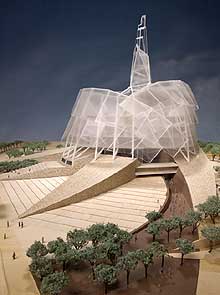
The Journey through the museum parallels an epic journey through life. Visitors enter the museum between the Roots, protective stone arms suggestive of an ancient geological event. Clutching the earth, the roots are calibrated to block northern and northwestern winds and celebrate the sun, with apertures marking paths of equinox and solstice. Containing the essential public interface functions of the museum, the Roots create a framework for ceremonial outdoor events with roof terraces and amphitheater seating. The journey begins with a descent into the earth, a symbolic recognition of the earth as the spiritual center for many indigenous cultures. Arriving at the heart of the building, the Great Hall. Carved from the earth, the archaeologically rich void of the Great Hall evokes the memory of ancient gatherings at the Forks of First Nations peoples, and later, settlers and immigrants.
Like a mirage within the Museum, the Garden of Contemplation is Winnipeg’s Winter Garden. Basalt columns emerge from the top surface of the timeless granite monolith. Water and medicinal plants define space and suggest content. The First Nations sacred relationship to water is honored, as a place of healing and solace amidst reflections of earth and sky. The space of the Garden functions as a purifying “lung†reinforcing the fundamental environmental ethic, which grounds the building.
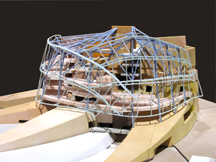
The journey culminates in an ascent of the Tower of Hope, with controlled view release to panoramic views of sky, city and the natural realm. Glacial in its timelessness, the Tower of Hope is a beacon for humanity. Symbolic of changes in the physical state of water, material and form, it speaks to the life affirming hope for positive changes in humanity. An allusion to the vaporous state of water, the Cloud, houses the functional support of the Museum. With strong overlaps to the visitor experience, the cloud is envisioned as light filled and buoyant, in marked contrast to the geologic evocation of the Roots and Stone Galleries, providing a visible reminder from the exterior, in tandem with the Tower, of the power and necessity of hope and tolerance. “
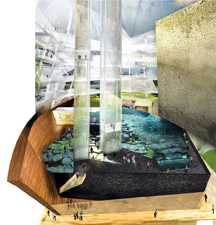
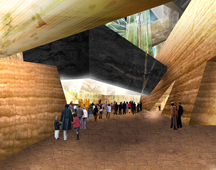
http://www.predock.com/CMHR.html
In addition to the exterior the interior is going to be surreal, filled with multimedia overload. Take Nintendo Wii and times it by a thousand and thats what you’ll get, except it’ll be for a learning experience rather than gaming. (so there is a risk it could be boring) but Designer Ralph Applebaum will be responsible for making the interiors work, he who is notorious for many many museum interiors (http://www.raany.com/) such as the Rose Center for Earth & Space; Corning Museum of Glass, he should be up for the task. The interiors will showcase such technologies as gesture recognition walls. “These projects tend to grow and change, not only with new information but new technology as well,” Appelbaum told reporters. “But the general feeling of the experience, the idea it’s meant to engage you in an interactive way, a participatory way, that it’s meant to give you insight into how other people think, and give you empathy into other people’s thoughts, that I think will always be with the project.”
[[article by austin]]
Posted: May 7th, 2007
at 11:00am by Arco
Categories: architecture,featured ninjas
Comments: 1 comment
One Response to 'Canadian Museum for Human Rights'
Subscribe to comments with RSS or TrackBack to 'Canadian Museum for Human Rights'.



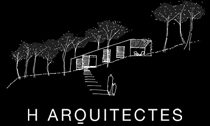










“rooted in the mountainside carved into it like the stories of hardships that have been carved into history”
mountainside? the site for the proposed museum is among the flattest places on earth — at the forks, in Winnipeg, Canada, where two lazy prairie rivers converge, each with a massive, wide, and very flat flood plain (as much as 70 kilometres wide!). the only hills within the region are manmade, such as garbage hill and the banks of the red river floodway.
Anonymous
11 Sep 08 at 3:47 pm